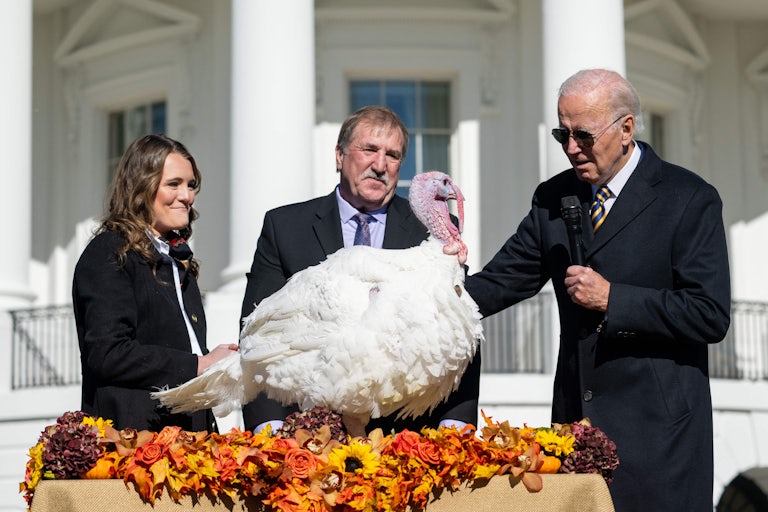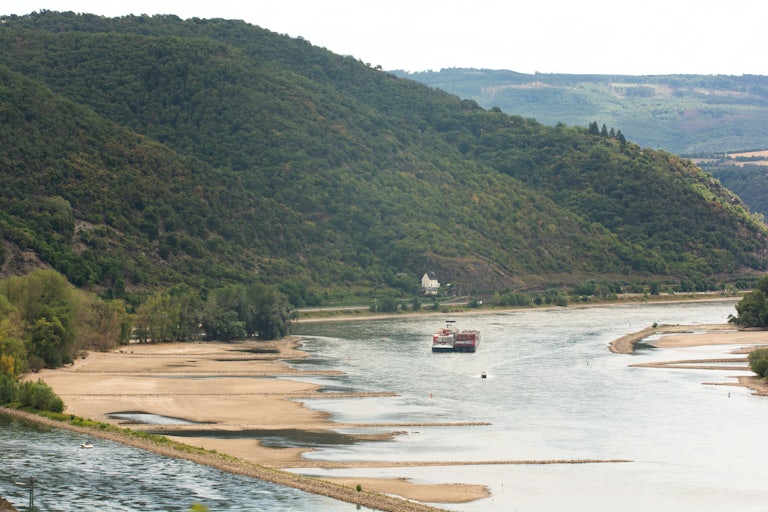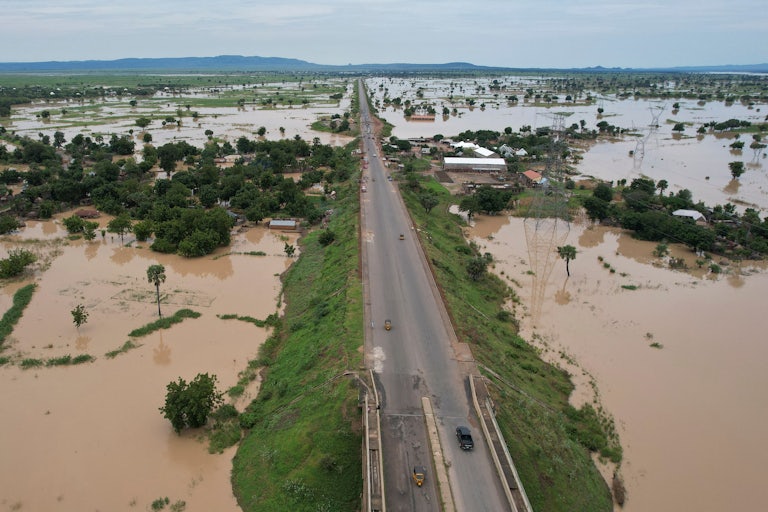Thanksgiving Is Trapped in Nostalgia for a Lost Era of Harvest Festivals. It’s Time to Reckon With the Reality of American Farming.
These turkeys are miserable. These apples are threatened by fire blight. These decorative gourds are hiding the truth.

If fall is the season of agricultural cosplaying—apple picking, pumpkin carving, frantically posing in textiles developed before the advent of central heating—then Thanksgiving is the event toward which all the practice of September and October builds. Thanksgiving is many things, after all, but its aesthetic markers scream “harvest festival,” from the table settings to the dessert options. While the United States ditched seasonal eating somewhere around the middle of the twentieth century with the advent of refrigerated transport, seasonality comes roaring back each November in the apple, pecan, pumpkin, and cranberry pies.
It’s hard to know how to feel about this ritualistic reminder of the farming year. Some might argue that any reconnection between postindustrial man and the environment is good. But the reality, of course, is that Americans are pretty well checked out of modern agricultural practices, whether or not a decorative gourd adorns their holiday table. While some of the 88 percent who reportedly eat turkey on Thanksgiving may be dimly aware they’re commemorating the consumption of a bird European colonizers quickly extirpated via hunting and deforestation, fewer probably comprehend the dystopian dynamics of the modern turkey industry. Cute autumnal media features like The New York Times’ recent photo-essay on wild turkey mating rituals are unlikely to enlighten them. Zero wild turkey “wingmen,” regrettably, are involved in breeding the birds that wind up on most tables, which overwhelmingly hail from a single breed of unnervingly lopsided turkeys bearing little resemblance to their wild cousins.
In addition to the grisly realities of poultry production in general, turkey breeding also relies on artificial insemination, a technology considerably grimmer in the execution than you might imagine from the clinical terminology. These concentrated poultry operations pose a serious threat of water pollution—often to already marginalized communities where the farms are located. They’re increasingly suspected to be a risk factor in emerging (and antibiotic-resistant) diseases. They’re kept afloat by cheap, subsidized, mass-produced American grain, which comes with its own host of environmental and equity problems. And then, of course, almost all meat is on the emissions-heavy side of the spectrum, as compared to plant foods.
That last bit is darkly ironic, given that climate change is already threatening the plant portion of the Thanksgiving plate. Erratic temperature patterns make it hard to grow cranberries—with sunscald damaging crops and leading to fruit rot and unusually early blossoms getting killed off by frost. Global warming is turbocharging fire blight, the scourge of apple orchards, pushing the fungal disease further and further north. Pumpkin harvests suffer with global warming’s torrential rains—as happened in 2015.
This is a depressing list of problems. But for what it’s worth, I don’t think the answer is to give up on Thanksgiving. Rather, as TNR columnist Liza Featherstone suggested last year, it may be time for Americans to deepen their engagement with the holiday. There’s a radical strain of Thanksgiving celebration that could still be reclaimed—and even serve as an antidote to overconsumption. “Gratitude can feel like a reprieve from all the tiresome aspiration of capitalism; an embrace of what we have,” Liza wrote. “Giving thanks is a respite from the struggle to achieve more.”
If you like your radicalism to be more action-oriented, finish your Thanksgiving meal by reading Gabriel Rosenberg and Jan Dutkiewicz’s classic call to “Abolish the Department of Agriculture.” Maybe the best way to celebrate the harvest is to save American farming, remaking it for a more sustainable and equitable future.
Good News
In a surprising turn of events, rich countries including the U.S. finally gave in and agreed to establish a fund to help poorer and more vulnerable countries deal with the fallout from climate change. Read Kate Aronoff’s piece on the turnaround here.
![]()
Bad News
It’s looking increasingly likely from the lack of emissions-reduction progress at the COP27 climate summit that the world will blow past the goal of limiting warming to 1.5 degrees Celsius (2.7 degrees Fahrenheit). This week at TNR, Stephen Lezak argues that giving up on 1.5 degrees is “a luxury only the rich can afford.”
Elsewhere in the Ecosystem
“Despair is unproductive. It is also a sin.” Not all of the entries in Elizabeth Kolbert’s alphabetical guide to climate change are as pithy as the letter Ds, but all transcend what you might otherwise suspect to be a cutesy gimmick. F stands for “Flight,” an entry in which Kolbert takes the reader on a tour of the Alia, an electric plane. K stands for “Kilowatt,” an entry that focuses on America’s outsize per-capita energy consumption. Complete with great illustrations and data visualization, this centerpiece of the magazine’s climate issue is the perfect item to curl up with in a quiet moment this holiday weekend—or discuss at the table. Check out this excerpt from N (“Narratives”):
“Narratives are socially constructed ‘stories’ that make sense of events,” thereby lending “direction to human action.” So observes a paper published recently in the journal Climatic Change by a team of European researchers. Climate-change narratives, the team notes, typically foreground “doom and gloom.” … This approach, the researchers argue, can be counterproductive: “Narratives of fear can become self-fulfilling prophecies.” If people believe that things will only get worse, they feel overwhelmed. If they feel overwhelmed, they’re apt to throw up their hands, thus guaranteeing that things will only get worse. A diet of bad news leads to paralysis, which yields yet more bad news.
What’s needed instead, the paper goes on, are narratives that “empower people to act.” Such narratives tell a “positive and engaging story.” They “articulate a vision of ‘where we want to go’” and outline steps that could be taken to arrive at this metaphorical destination. Positive stories can also become self-fulfilling. People who believe in a brighter future are more likely to put in the effort required to achieve it. When they put in that effort, they make discoveries that hasten progress. Along the way, they build communities that make positive change possible.
Read Elizabeth Kolbert’s article at The New Yorker.
This article first appeared in Apocalypse Soon, a weekly TNR newsletter authored by deputy editor Heather Souvaine Horn. Sign up here.


.png)

.png)

